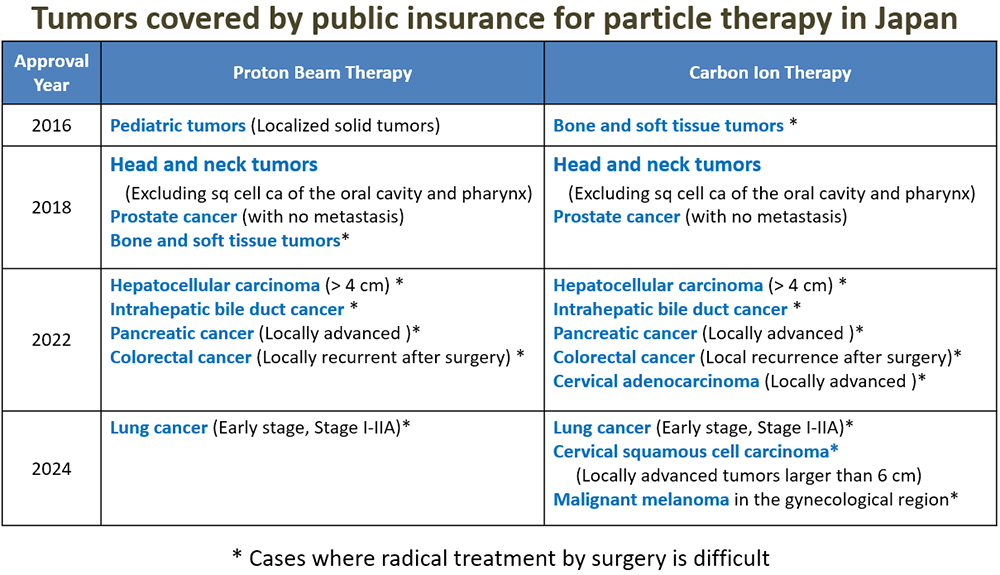
- Present status and actual results
- General situation of heavy ion radiotherapy
General situation of heavy ion radiotherapy
A sharp increase in the number of patients, due to insurance coverage and the establishment of short-term treatment
Number of patients treated: A total of over 43,000 people treated with heavy ion radiotherapy
From the late 1970s, the Lawrence Berkeley National Laboratory (LBL) in the US conducted pioneering research on heavy ion radiotherapy using a preexisting accelerator constructed for nuclear experiments (this research has now concluded). Subsequently, Japan's National Institute of Radiological Sciences (NIRS) started full-scale clinical research with the world's first system dedicated to heavy ion radiotherapy. With the treatment of approximately 43,000 patients (as of end of 2023), heavy ion radiotherapy has grown to be a highly effective, minimally invasive therapy, which is gaining recognition around the world.
As of end of 2023, the QST Hospital (the Hospital of the National Institute of Radiological Sciences) had treated more than 15,500 patients with the HIMAC heavy ion radiotherapy system since the beginning of clinical research in 1994. In recent years, more and more patients have been enrolled, in the context of the following three situations: (1) in 2003, heavy ion radiotherapy was approved as a "highly advanced medical technology" (now called "advanced medical technology") by the national government; (2) an irradiation method was established that enabled smooth treatment; and (3) the medical characteristics of heavy ion beams were clarified, which resulted in the treatment fraction and period per patient being substantially reduced.
Furthermore, in 2016, some cancer treatment became eligible for insurance coverage, and the number of patients is increasing further.
The current therapeutic facilities are the QST Hospital ; Hyogo Ion Beam Medical Center (carbon [heavy ion] radiotherapy began in 2002) ; Gunma University Heavy Ion Medical Center (treatment began in 2010) ; Kyushu International Heavy Ion Beam Therapy Center (SAGA HIMAT) (treatment began in 2013) ; Kanagawa Cancer Center (opened in 2015) ; Osaka Heavy Ion Therapy Center (opened in 2018) ; and East Japan Heavy Ion Center, Yamagata University Faculty of Medicine (opened in 2021). A total of more than 43,000 patients have been treated at these seven facilities.

Change in the number of patients treated at the QST Hospital (June 1994 to March 2019)

Treatment results for each cancer: Prostate cancer patients were the most numerous, and half of all patients used the advanced medical technology system
The proportions of the major cancers of enrolled patients were as follows, in descending order: prostate cancer (27.8%); bone and soft tissue (10.7%); and head and neck (10.1%). comprehensive (9.6%); lung (8.7%).
Beginning in April 2016, some heavy ion radiotherapy for cancers are covered by National Health Insurance.
The number of patients enrolled in heavy ion radiotherapy at the QST Hospital (June 1994 to March 2019)

[Reference data] National Institutes for Quantum and Radiological Science and Technology, National Institute of Radiological Sciences














